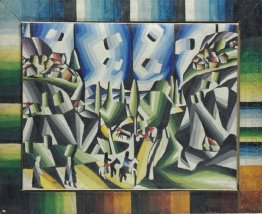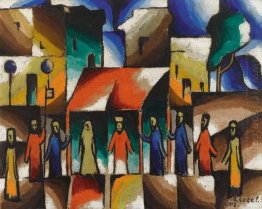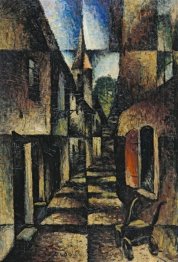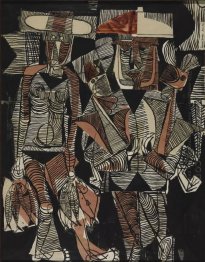Cubo-Expressionism

Cubo-Expressionism is most often known as Czech Cubism. As advocates of Cubism, artists began to add their own interpretation into the art form. The birth of Czech Cubism or Cubo-Expressionism came forth because of this desire to explore Cubism with the use of various media.
In 1912, Cubo-Expressionism began to show signs in the work generated by the designers and the architects based in Prague, which was one of the cornerstones of Cubism, as many artworks with this theme were created in this city. At first, Cubo-Expressionism was not regarded as art, but as a form of décor. The Czech cubists found a way to "rebel" against realism by creating a landscape with sharp, pointed features. They relied on these strong elements to steer away from what was then traditional design – the smooth, curved edges, and the soft lines. The fragmentation of Cubism combined with the strong emotions of Expressionism gives Cubo-Expressionism a sort of jagged, but intense emotion – an art revolution came to life.
Cubo-Expressionism art are usually structures or architecture. In fact, if you take a trip to Prague, you will find many buildings – old and new – with Cubo-Expressionism themes. Among the more popular Czech artists are Bohumil Kubista – who took inspiration from Picasso and Cezanne. Another famous Cubo-Expressionist is Frantisek Kupka. Kupka went on to be well established as a pioneer of abstract art, but his roots began with Cubo-Expressionism.
Cubo-Expressionism has known to greatly impact the Czech Republic. A lot of architecture and furniture incorporate this form of art. You can even see elements of this art style in their tableware, their ceramics, their jewellery and even in their landscaping. In 1911, the Group of Plastic Artists was formed, which included Filla and Gutfreund – famous sculptors in Prague. The group was also composed of designers and architects whose work centered on Cubo-Expressionism pieces.
One popular Cubo-Expressionism piece known as "The House of the Black Madonna" was identified as the first architecture with Cubo-Expressionist themes. It is actually a department store and was designed by Docar. Inside the store is the Grand Café Orient, which is a thematic café that is composed of Cubist elements from the light fixtures down to the floor designs. At present, this building belongs to the Czech Museum of Fine Arts - a Museum on Czech Cubism and is one of the well-known attractions for art aficionados.
In a way, Cubo-Expressionism allows Cubism itself to become a part of a person's life. By finding life in architecture, sculpture and other designs, it has situated itself in the lifestyle of the people.









